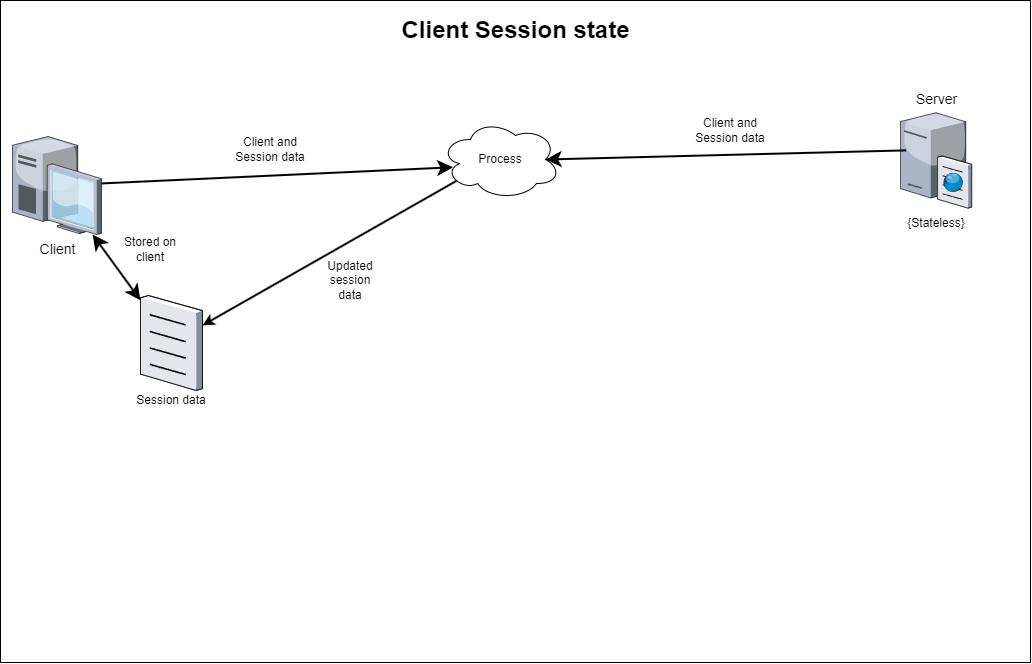Client Session Pattern
Name
Intent
- Create stateless servers that removes the problem of clustering, as users can switch between servers seamlessly.
- Makes data more resilient in case of server fail-over.
- Works well with smaller data sizes.
Explanation
Real-World Example
You're looking to create a data management app allowing users to send requests to the server to
modify and make changes to data stored on their devices. These requests are small in size and the
data is individual to each user, negating the need for a large scale database implementation.
Using the client session pattern, you are able to handle multiple concurrent requests, load
balancing clients across different servers with ease due to servers remaining stateless. You also
remove the need to store session IDs on the server side due to clients providing all the
information that a server needs to perform their process.
In Plain words
Instead of storing information about the current client and the information being accessed on the
server, it is maintained client side only. Client has to send session data with each request to
the server and has to send an updated state back to the client, which is stored on the clients
machine. The server doesn't have to store the client information.
(ref)
Programmatic Example
Here is the sample code to describe the client-session pattern. In the below code we are first
creating an instance of the Server. This server instance will then be used to get Session objects
for two clients. As you can see from the code below the Session object can be used to store any
relevant information that are required by the server to process the client request. These session
objects will then be passed on with every Request to the server. The Request will have the Session
object that stores the relevant client details along with the required data for processing the
request. The session information in every request helps the server identify the client and process
the request accordingly.
public class App {
public static void main(String[] args) {
var server = new Server("localhost", 8080);
var session1 = server.getSession("Session1");
var session2 = server.getSession("Session2");
var request1 = new Request("Data1", session1);
var request2 = new Request("Data2", session2);
server.process(request1);
server.process(request2);
}
}
@Data
@AllArgsConstructor
public class Session {
/**
* Session id.
*/
private String id;
/**
* Client name.
*/
private String clientName;
}
@Data
@AllArgsConstructor
public class Request {
private String data;
private Session session;
}
Architecture Diagram

Applicability
Use the client state pattern when:
- Processing smaller amounts of data to prevent larger requests and response sizes.
- Remove the need for servers to save client states. Doing so also removes the need to store session IDs.
- Clustering is an issue and needs to be avoided. Stateless servers allow clients to be easily distributed across servers.
- Creates resilience from data losses due to server fails.
Consequences
- The server is stateless. Any compute API will not store any data.
- Struggles to deal with large amounts of data. Creates longer send and receive times due to larger amounts of session data to manage.
- Security. All data is stored on the client's machine. This means that any vulnerabilities on the clients side can expose all data being sent and received by the server.